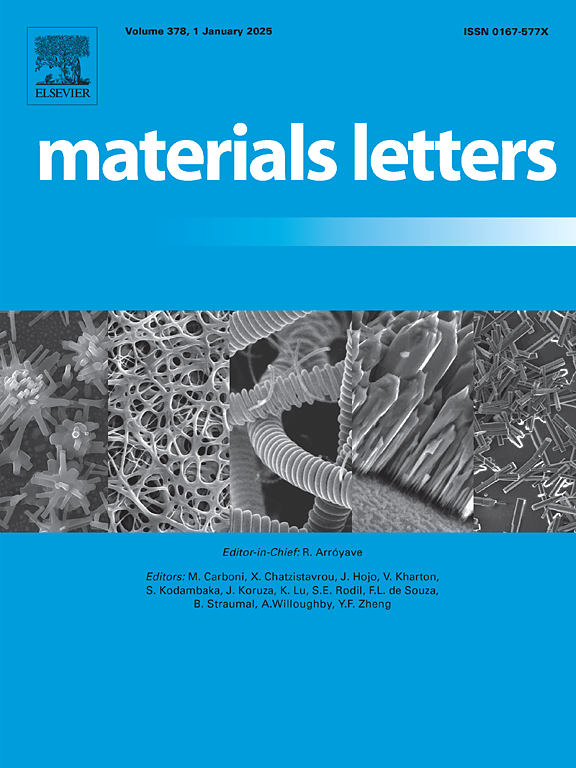Thermoelectric power generation based on p-Sb2Te3 / n-Bi2Te3 modules as prepared by Spark Plasma Sintering
IF 2.7
4区 材料科学
Q3 MATERIALS SCIENCE, MULTIDISCIPLINARY
引用次数: 0
Abstract
In this work, the thermoelectric (TE) modules of p-Sb2Te3 and n-Bi2Te3 were fabricated by using the Spark Plasma Sintering (SPS) process. Based on TE properties measurement, the zT value was calculated to be achieved of 0.89 for Sb2Te3 and 0.70 for Bi2Te3 at 523 K. A thermoelectric generator (TEG) module comprising eight p–n couples was fabricated and tested, achieving a maximum electrical power output of approximately 0.37 W at the temperature difference of 473 K.
火花等离子烧结制备基于p-Sb2Te3 / n-Bi2Te3模块的热电发电
本文采用火花等离子烧结(SPS)工艺制备了p-Sb2Te3和n-Bi2Te3的热电(TE)模块。在523 K时,Sb2Te3的zT值为0.89,Bi2Te3的zT值为0.70。制作并测试了由8对p-n偶组成的热电发生器(TEG)模块,在温差为473 K时实现了约0.37 W的最大输出功率。
本文章由计算机程序翻译,如有差异,请以英文原文为准。
求助全文
约1分钟内获得全文
求助全文
来源期刊

Materials Letters
工程技术-材料科学:综合
CiteScore
5.60
自引率
3.30%
发文量
1948
审稿时长
50 days
期刊介绍:
Materials Letters has an open access mirror journal Materials Letters: X, sharing the same aims and scope, editorial team, submission system and rigorous peer review.
Materials Letters is dedicated to publishing novel, cutting edge reports of broad interest to the materials community. The journal provides a forum for materials scientists and engineers, physicists, and chemists to rapidly communicate on the most important topics in the field of materials.
Contributions include, but are not limited to, a variety of topics such as:
• Materials - Metals and alloys, amorphous solids, ceramics, composites, polymers, semiconductors
• Applications - Structural, opto-electronic, magnetic, medical, MEMS, sensors, smart
• Characterization - Analytical, microscopy, scanning probes, nanoscopic, optical, electrical, magnetic, acoustic, spectroscopic, diffraction
• Novel Materials - Micro and nanostructures (nanowires, nanotubes, nanoparticles), nanocomposites, thin films, superlattices, quantum dots.
• Processing - Crystal growth, thin film processing, sol-gel processing, mechanical processing, assembly, nanocrystalline processing.
• Properties - Mechanical, magnetic, optical, electrical, ferroelectric, thermal, interfacial, transport, thermodynamic
• Synthesis - Quenching, solid state, solidification, solution synthesis, vapor deposition, high pressure, explosive
 求助内容:
求助内容: 应助结果提醒方式:
应助结果提醒方式:


